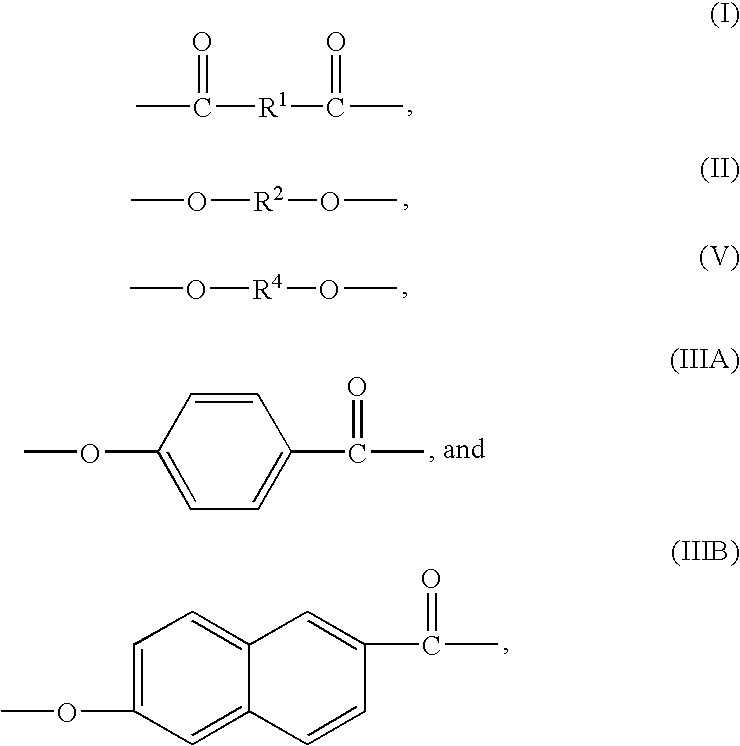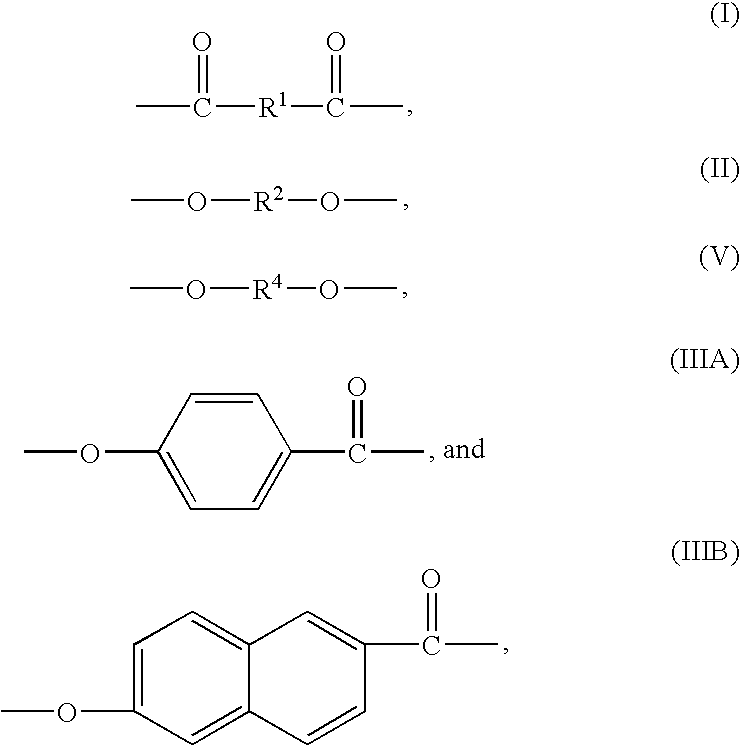Multilayer composite structure with epoxide containing adhesive layer
a composite structure and adhesive layer technology, applied in the direction of adhesive types, transportation and packaging, synthetic resin layered products, etc., can solve the problems of permanent loss of barrier performance and decline of barrier performance of evoh
- Summary
- Abstract
- Description
- Claims
- Application Information
AI Technical Summary
Benefits of technology
Problems solved by technology
Method used
Image
Examples
example 1
[0109] In this example adhesive layer copolymers were tested for adhesion to Polymer A by the methods described above. The results are in Table 1.
TABLE 1Heat Seal Strength at252° C. (g / 25 mm)1.5 Second3.0 SecondDwellDwellTimeTimeCopolymerFilm TypeAvg.Std. Dev.Avg.Std. Dev.Adhesive LayerCast00Copolymer EAdhesive LayerCast00Copolymer AAdhesive LayerCast89780Copolymer BAdhesive LayerCast33612768036Copolymer BAdhesive LayerPressed17036Copolymer CAdhesive LayerCast621101Copolymer D
[0110] The poor adhesion observed with Adhesive Polymer A as compared to that observed with Adhesive Polymer B, Adhesive Polymer C and Adhesive Polymer D demonstrates the preference for a glycidyl moiety level of at least about 2 weight %
[0111] The absence of adhesion observed with Adhesive Polymer E shows that conventional anhydride based adhesive layers resins do not bond well to Polymer A.
example 2
[0112] In this example, ethylene copolymers containing glycidyl moieties were formulated with additional ingredients and tested for adhesion as by the methods described above. The formulations are described in Table 2. The adhesive test data are in Table 3.
TABLE 2Formulated Ethylene CopolymersFormulationNo.FormulationExplanation180% Adhesive LayerAdjust viscosity by additionCopolymer B, 20%of EPDM to Adhesive LayerNORDEL ® 3720PCopolymer B290% Adhesive LayerUse of a tackifying resin withCopolymer B, 10%Adhesive Layer Copolymer BREGALITE ® 1125370% Adhesive LayerUse of EPDM and aCopolymer B, 20%tackifying resin with AdhesiveNORDEL ® IP3720P,Layer Copolymer B10% REGALITE ® 1125
[0113]
TABLE 3Heat Seal Strength at252° C. (g / 25 mm)1.5 Second3.0 SecondDwellDwellTimeTimeFormulation No.Film TypeAvg.Std. Dev.Avg.Std. Dev.1Cast622612Cast6701993Cast91082
[0114] These results demonstrate that a glycidyl moiety containing adhesive layer polymer that contains at least about 2 weight % glycidyl mo...
example 3
[0115] This example illustrates two methods for reducing residual glycidyl methacrylate levels in copolymers containing it as a comonomer.
[0116] A sample of Adhesive Layer Copolymer B pellets was analyzed for residual GMA using gas chromatography. The value found was 550 ppm. When a blown film was made from the pellets, the GMA level was found to have dropped to 25 ppm. Adding 1 weight % ABSECENTS®3000 zeolite was found to reduce the GMA level in the film to 12 ppm
[0117] A sample of Adhesive Layer Copolymer C with an initial residual GMA level of 650 ppm and initial residual n-butyl acrylate level of 100 ppm was water washed using an extractor / extruder. The barrel temperatures were 220° C. Water was injected into two ports of the devolatilizing extruder. The residual GMA level after one pass was about 11 ppm, and after two passes about 2.5 ppm. The residual n-butyl acrylate level after one pass was 2 ppm, and after two passes 0.2 ppm.
PUM
| Property | Measurement | Unit |
|---|---|---|
| weight % | aaaaa | aaaaa |
| weight % | aaaaa | aaaaa |
| weight % | aaaaa | aaaaa |
Abstract
Description
Claims
Application Information
 Login to View More
Login to View More - R&D
- Intellectual Property
- Life Sciences
- Materials
- Tech Scout
- Unparalleled Data Quality
- Higher Quality Content
- 60% Fewer Hallucinations
Browse by: Latest US Patents, China's latest patents, Technical Efficacy Thesaurus, Application Domain, Technology Topic, Popular Technical Reports.
© 2025 PatSnap. All rights reserved.Legal|Privacy policy|Modern Slavery Act Transparency Statement|Sitemap|About US| Contact US: help@patsnap.com



